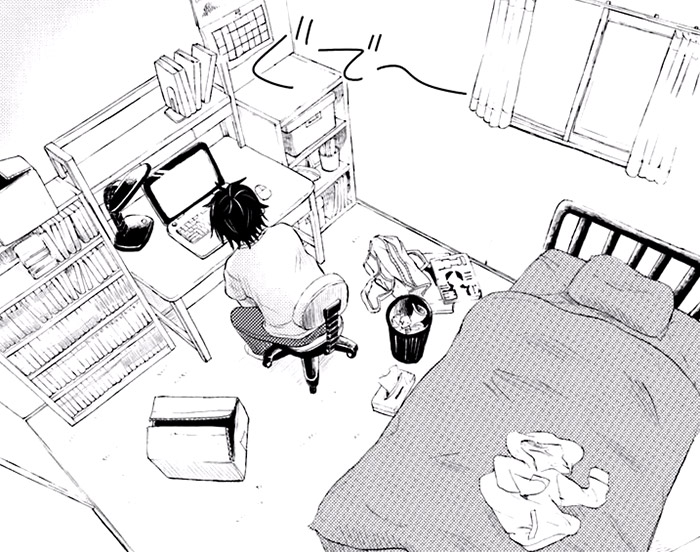WHY DO WE NEED SAFETY PROTOCOLS ONLINE?
Our lives have become highly integrated with the online space of the internet and social media. For most people, a significant percentage of interpersonal social activities now happen online.
Perhaps in the real world we could visit and leave a dungeon or play party without leaving too much of a trace, but in cyberspace we nearly always leave a permanent digital footprint. When we become naked and/or kinky online, our existence doesn’t disappear just because we click the LOG OUT button.
There’s many online kink spaces in social media that are shared with “vanilla” interests such as on Facebook, Twitter and Tumblr, and on more specialist fetish social media such as Fetlife, Recon and Grindr. It just takes a few clicks.
Your activities online are rarely limited to the people within a small group. The most obvious newbie mistake would obviously be to not understand the privacy preferences of, for example, a Facebook group, and realise too late that your interaction in that group is also visible to friends and family.
I am not someone who is hyper-paranoid about the risks and dangers of cyber privacy, but I do take some precautions in managing my online identities, so that my naked interaction stays enclosed and contained in the virtual space that I enter.
Like RACK safety protocol that we have for BDSM activities, there is no perfectly safe way when it comes to managing online kink and non-kink profiles, however, we can try to gain awareness and reduce the associated risks. Here are a few tips to help us to do a safety diagnosis.
SEPARATE EMAIL ACCOUNTS
Pretty much every registration of new profiles in any social networking site, whether it is kink or non-kink, requires an email address. An email address has really become like a virtual home where you may receive mail, messages, requests and advertisements. Many people have a personal email address, and a work address. For kinky people, it may also be worth having a third email address to separate your personal (friends and family) email from your online fetish activities.
It’s easy enough to keep track of your social media when you have one login per service and only a few services, but it becomes exponentially harder when you are juggling more services and more profiles. Email is the easiest way to keep everything in check.
Consider these three email addresses (work, personal and kink) to be completely separate silos. Any time you create any cross-link between the silos you open yourself up to danger, so you should try to never do that. Don’t hyperlink. Keep the boundary clear, so your interaction with different types of people stays within your control. You don’t want someone from your kink community to start chatting with your non-kink parents or bosses and potentially risk outing you. And, of course you don’t want to accidentally send your fisting photo to your mom just because your mom is right below your kinky friend’s contact.
That is not say you HAVE to separate your identities. Depending on how out and proud you are, you may not even want to separate your personal from your kink, or you can slowly bring your kinky friends who you feel safe with into your non-kink world.
But, having separate cyberspaces by-default gives you control over your online identities.
Personally, I have two personal email accounts — my kink account is the one that I use most of the time, because BDSM is a major part of my identity. I use my non-kink email address for general social activities, and when my non-kink friends become close to me then I will make the decision of whether I will give them my kink account (and vice versa) if I think it is necessary.
UNDERSTAND IMAGE SEARCHES
Your email address is not the only thing that can break a silo and lead someone from one area of your life to another. If you post an image on a fetish site, there are a couple of things you should be aware of. Most obviously, a background in a photograph might reveal many things, including your location. But, where you can break your silo is in posting the same (or very similar) images in different profiles. Google has a function for image-search, which is as easy as taking a picture and dropping it into the search box. If you are unfortunate enough to have a stalker on a fetish site, and you’ve cross-posted your pictures, a quick image-search could lead them to your LinkedIn or Facebook or other social media presences.
BE AWARE OF YOUR MENTAL HEALTH AND DIGITAL DIASPORA
Talking to someone online is different from talking face to face. It’s easy to be connected, but it’s also easy to be disconnected. This can be difficult for social interaction.
Dissociation is a word that is used to describe the disconnection or lack of connection between things usually associated with each other. Dissociated experiences are not integrated into the usual sense of self, resulting in discontinuities in conscious awareness.
International Society for the Study of Trauma and Disassociation
There can be many similarities between online interaction and the psychological symptoms of disassociation, which can include:
• depersonalisation
• derealisation
• dissociative amnesia
• identity confusion and identity alteration
It can also be a seductive space which can begin to take the form of an escape from the real world, and there have been many (many) cases of people spending far too much in their room interacting online and not eating properly, or on a more extreme end, quitting their job to stay at home all day in their online space(s).
This can be especially difficult in regions where there are little to no physical spaces to gain access to your sexual identity groups. It forces us to explore online so we feel accepted as kinky or gay or whatever sexual identity it is that we’re exploring that is being repressed in our geo-political region.
If you become so connected to your online identities that you lose the ability to function in your own real life environment, that can be a problem that can endanger your mental health.
PERMANENT DIGITAL FOOTPRINT
When you contribute writing, comments, pictures or videos online, they leave your control and enter a form of public domain. They no longer reside on your computer, but on a public server, and they can be archived, indexed, downloaded and reposted.
There are studies that suggest that the thrill of posting your sex video online somewhere like Xtube (or other sexual content) can be a safer way of sexual exploration. You have full control over what you do to yourself and what you post online, without risking someone endangering your physical being.
There are pros and cons that everyone has to evaluate for themselves. How much are we willing to give, and in exchange for what? Is it worth it? If you think the pros outweighed the cons, go ahead.
Having a better awareness of the risks and benefits of online presence helps us to better evaluate and judge. It lowers the risk that we take in cyberspace, and helps to keep us safe.
There’s no doubt that online communities are part of our lives now, and we will need to make trade-offs. When we join a site we agree to some small-print that gives away some degree of our privacy, and we do that in expectation of benefits. However, that doesn’t make us powerless to protect ourselves online, and it’s better to build in good habits from the outset than to run into trouble and discover later that we could/should have protected ourselves better.

